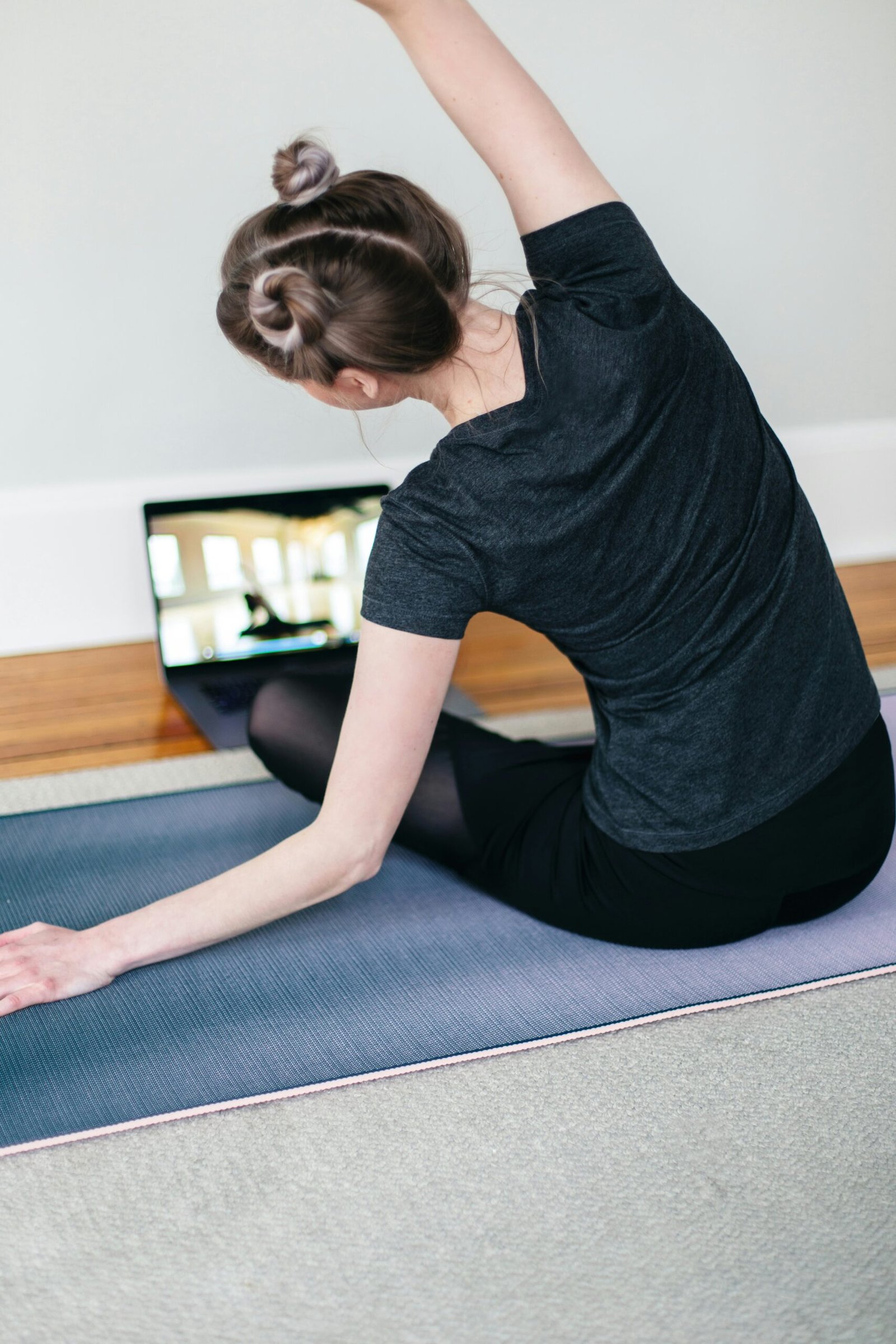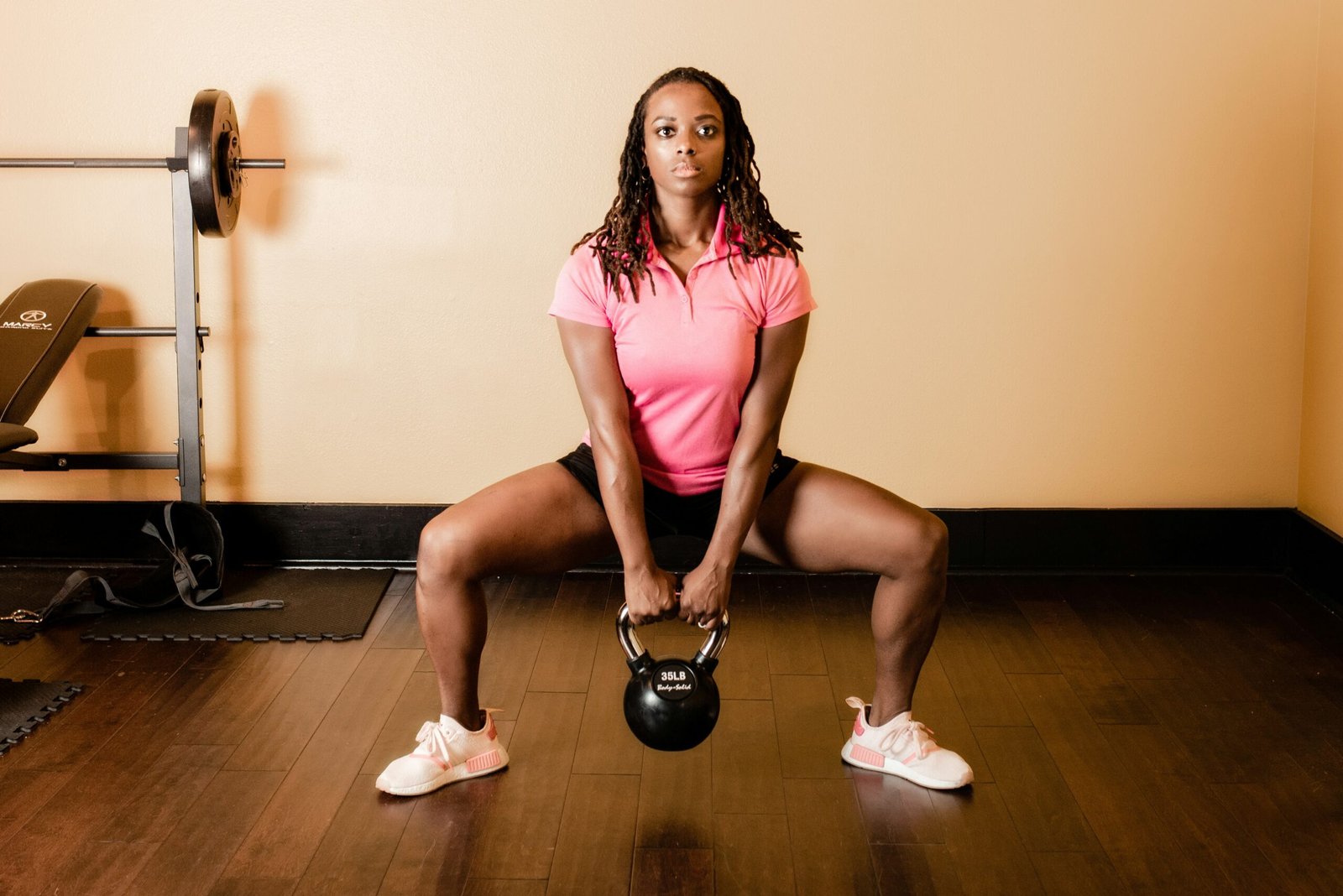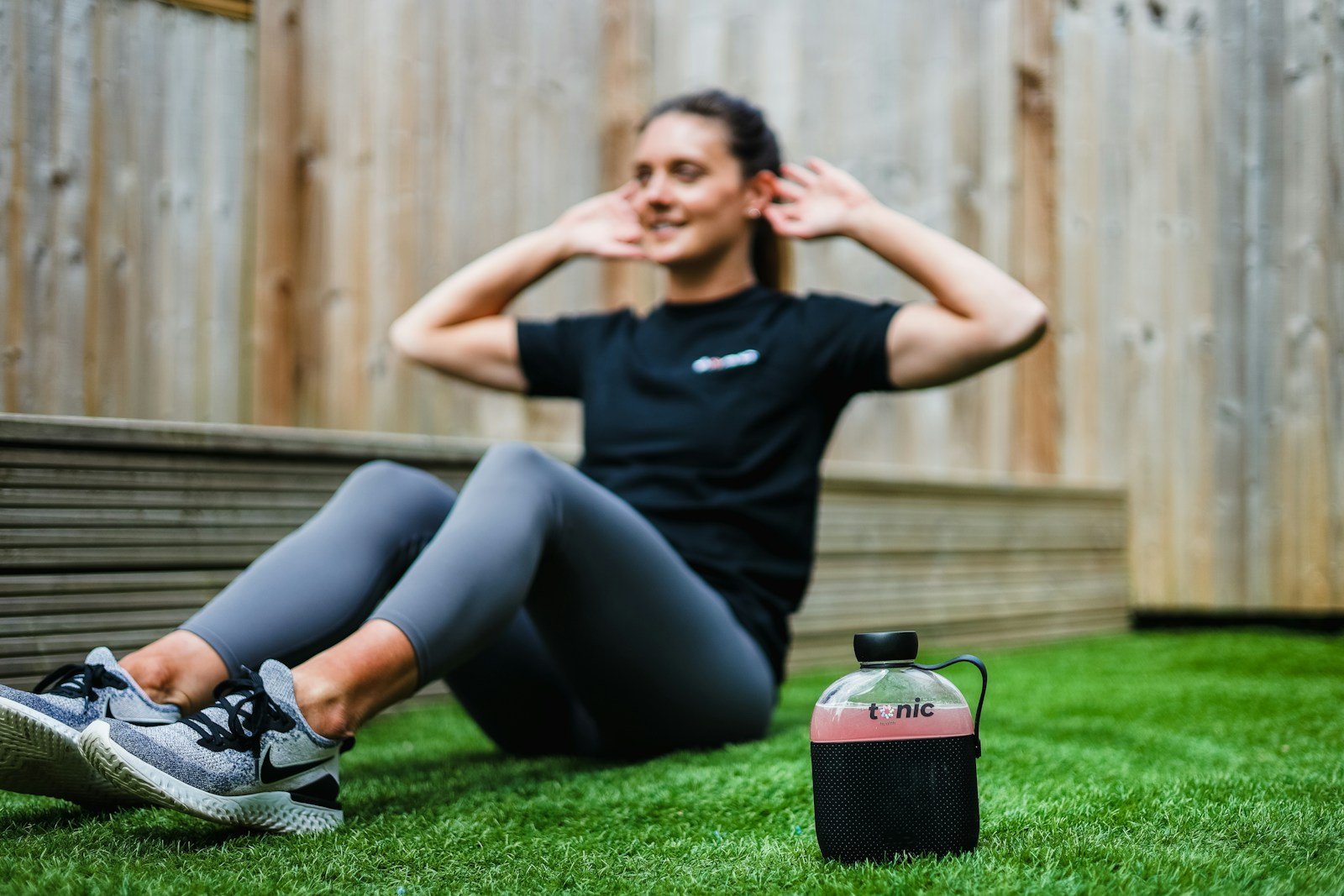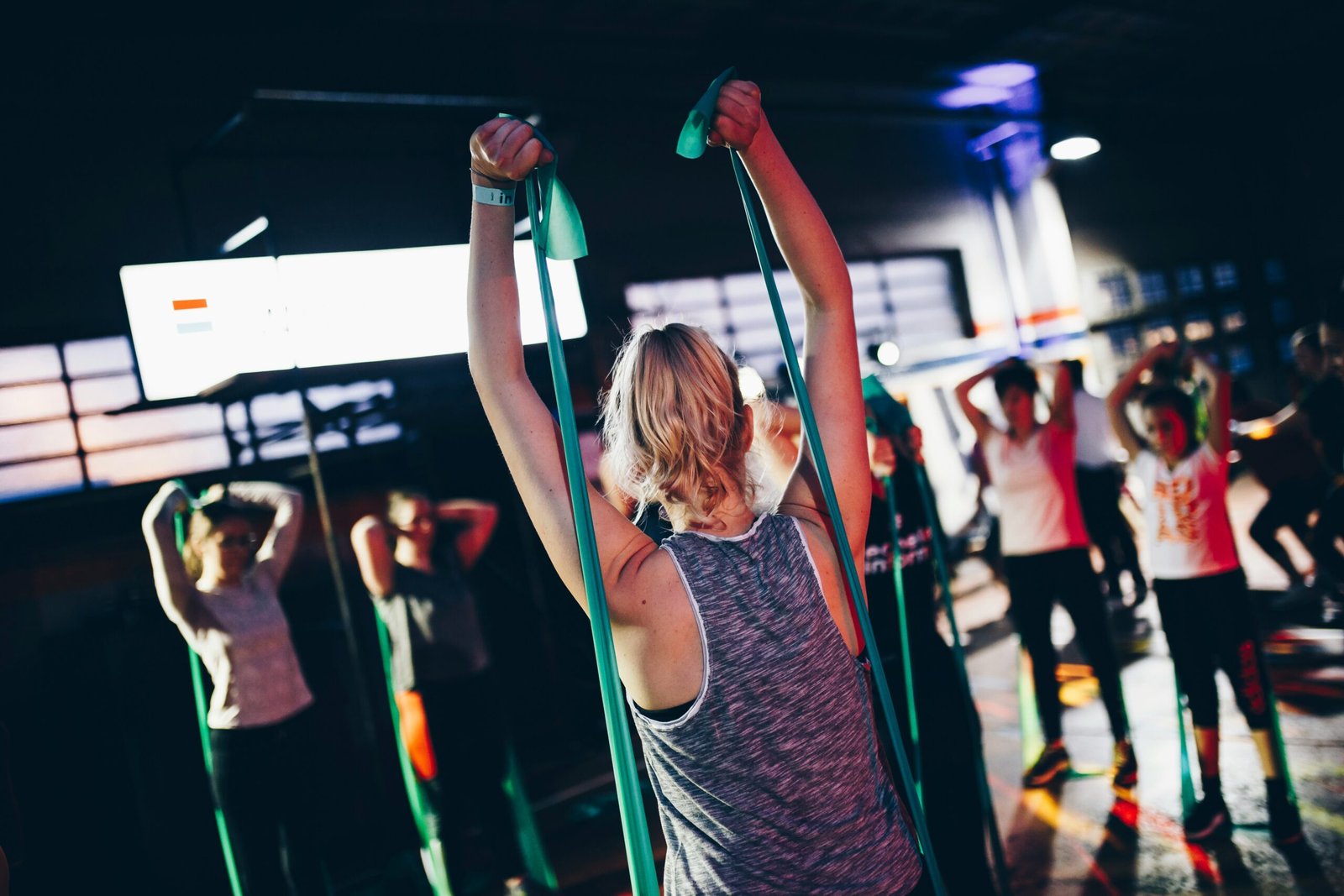Introduction to Belly Fat and Home Workouts
Reducing belly fat is a crucial aspect of overall health and wellness. Excess belly fat is not just a cosmetic concern; it is associated with an increased risk of several health conditions, including type 2 diabetes, cardiovascular diseases, and metabolic syndrome. Therefore, focusing on reducing belly fat can significantly improve one’s quality of life and longevity.
Home workouts present an effective and convenient solution for targeting belly fat. Exercising at home eliminates the need for a gym membership, allowing individuals to engage in physical activities without leaving their personal space. This flexibility is particularly beneficial for those with busy schedules or who prefer to work out in a private and comfortable environment. By incorporating regular home workouts into one’s routine, it is possible to efficiently reduce belly fat and enhance overall fitness.
Moreover, home workouts offer the advantage of being adaptable to individual fitness levels and preferences. Whether you are a beginner or an experienced fitness enthusiast, you can tailor your exercises to match your specific needs and goals. Additionally, home workouts often require minimal equipment, making them accessible to a broader range of people. This accessibility ensures that anyone can take steps towards reducing belly fat, regardless of their circumstances.
In the following sections, we will explore six specific exercises that can be done at home to target and reduce belly fat. These exercises are designed to be simple yet effective, providing a comprehensive approach to achieving a healthier and more toned midsection. By consistently incorporating these exercises into your routine, you will be well on your way to reducing belly fat and improving your overall health.
Exercise 1: Planks
Planks are an exceptional core-strengthening exercise that effectively targets the abdominal muscles. To perform a proper plank, start by positioning yourself face down on the floor, supporting your body weight on your forearms and toes. Ensure that your elbows are directly under your shoulders and your body forms a straight line from your head to your heels. Engage your core muscles by tightening your abdominal area and hold this position for as long as you can, aiming for at least 30 seconds to a minute for beginners.
To maintain proper form, avoid letting your hips sag or rise too high, as this can reduce the effectiveness of the exercise and potentially cause strain. Keep your head in a neutral position, looking at the floor, and breathe steadily throughout the duration of the plank.
To keep your routine challenging and engaging, consider incorporating variations of the plank. Side planks are an excellent way to target the oblique muscles. Begin by lying on your side and then lift your body onto one forearm, creating a straight line from head to feet. Hold this position while keeping your core engaged, and then switch to the other side.
Another dynamic variation is the plank jack. Start in the standard plank position and then jump your feet outwards and inwards, similar to the motion of a jumping jack. This not only targets the abdominal muscles but also adds a cardiovascular element to your workout, aiding in the reduction of belly fat.
Integrating planks into your exercise regimen can significantly contribute to a stronger core and reduced belly fat, provided they are performed with proper form and consistency. Experiment with different variations to maintain interest and progressively challenge your muscles.
Exercise 2: Bicycle Crunches
Bicycle crunches are a highly effective exercise for reducing belly fat because they engage multiple muscle groups simultaneously. This dynamic movement targets the upper and lower abdominal muscles as well as the obliques, making it a comprehensive core workout. When performed correctly, bicycle crunches can significantly contribute to a leaner, more toned midsection.
To perform bicycle crunches, start by lying flat on your back with your hands placed behind your head. Ensure your lower back is pressed firmly against the floor to prevent strain. Lift your knees to a 90-degree angle while keeping your calves parallel to the ground. This is your starting position.
Begin the movement by simultaneously lifting your shoulder blades off the floor and bringing your right elbow towards your left knee, which you should pull inwards as you extend your right leg out. It’s important to keep the movement controlled to maximize the engagement of your muscles and avoid injury. Return to the starting position and repeat the motion on the other side, bringing your left elbow towards your right knee while extending your left leg.
Focus on maintaining a slow and controlled pace throughout the exercise. Rapid, jerky movements can reduce the effectiveness of the workout and increase the risk of injury. Aim for a smooth, bicycling motion, ensuring that you fully engage your core muscles with each twist and extension.
Proper form is crucial for this exercise. Avoid pulling on your neck or head with your hands, as this can cause strain and diminish the workout’s benefits. Instead, aim to lift your chest towards your knees using the strength of your core. Keeping your elbows wide and your gaze upwards can help maintain proper alignment.
Consistently incorporating bicycle crunches into your workout routine can significantly contribute to reducing belly fat. They not only help in toning the abdominal muscles but also improve overall core strength and stability, which is essential for daily activities and other physical exercises.
Exercise 3: Mountain Climbers
Mountain climbers are a dynamic and efficient exercise that effectively targets the reduction of belly fat while simultaneously providing cardiovascular benefits and core strengthening. This full-body workout not only helps to burn calories quickly but also enhances overall endurance, making it an essential part of any home exercise regimen.
To perform mountain climbers correctly, follow these step-by-step instructions:
1. Begin in a high plank position with your hands placed directly under your shoulders, your body forming a straight line from your head to your heels. Engage your core to maintain stability.
2. Start the movement by bringing your right knee toward your chest as far as possible. Quickly switch legs, extending your right leg back to the starting position while simultaneously bringing your left knee toward your chest.
3. Continue alternating legs at a rapid pace, as if you were running in place. Ensure that your hips remain level and your core stays engaged throughout the exercise to maximize the effectiveness of this workout and prevent injury.
4. Aim to perform mountain climbers for 30 seconds to one minute per set, gradually increasing the duration as your endurance improves. Incorporate short, high-intensity bursts to further challenge your cardiovascular system and promote fat burning.
By integrating mountain climbers into your exercise routine, you not only contribute to reducing belly fat but also enhance your cardiovascular fitness and core strength. This exercise is particularly beneficial for individuals seeking a comprehensive workout that can be performed at home with minimal equipment.
Remember, consistency and proper form are key to reaping the full benefits of mountain climbers. Regular practice will result in improved endurance and a stronger, more toned midsection, helping you achieve your fitness goals more efficiently.
Exercise 4: Russian Twists
Russian twists are a highly effective exercise for targeting the obliques and enhancing core stability, making them a valuable addition to any routine aimed at reducing belly fat. This exercise not only engages the abdominal muscles but also involves the lower back and hip flexors, contributing to a stronger, more stable core.
To perform Russian twists, follow these steps:
1. Sit on the floor with your knees bent and your feet flat on the ground. Lean back slightly to create a V-shape with your torso and thighs, ensuring your spine remains neutral and not rounded.
2. Clasp your hands together in front of you. For increased intensity, hold a weight or a medicine ball close to your chest.
3. Engage your core by pulling your belly button towards your spine. This engagement is crucial for maintaining a neutral spine and preventing lower back strain.
4. Begin the movement by twisting your torso to the right, bringing your clasped hands or the weight beside your right hip. Keep your legs stationary throughout the motion.
5. Return to the starting position, then twist to the left, bringing your hands or weight beside your left hip. This completes one repetition.
6. Continue alternating sides in a controlled manner, ensuring that the movement is smooth and deliberate. Aim for 10-15 repetitions on each side to start, gradually increasing as your core strength improves.
Using weights or a medicine ball can significantly increase the intensity of Russian twists, providing a more challenging workout for those aiming to reduce belly fat. However, it is essential to prioritize form over weight to prevent injuries and maximize the benefits of the exercise.
Maintaining a neutral spine throughout the movement is vital. Avoid hunching your shoulders or curving your back, as this can lead to strain or discomfort. Focusing on core engagement and controlled movements will enhance the effectiveness of Russian twists, helping you achieve a stronger and more toned midsection.
Exercise 5: Leg Raises
Leg raises are a potent exercise specifically targeting the lower abdominal muscles. This exercise not only helps to reduce belly fat but also enhances core strength and stability, which is essential for overall physical health. The primary benefit of leg raises lies in their ability to isolate the lower abs, an area often overlooked in many workout routines.
To properly perform leg raises, start by lying flat on your back on a comfortable, firm surface. Place your hands under your glutes to support your lower back, palms facing down. Keep your legs straight and together. Slowly lift your legs towards the ceiling while maintaining your core engagement and ensuring your lower back remains in contact with the ground. Raise your legs until they form a 90-degree angle with your torso. Hold this position briefly before slowly lowering your legs back to the starting position without letting them touch the floor to maintain tension in the abdominal muscles.
Maintaining proper form is crucial for maximizing the benefits of leg raises and avoiding injury. Focus on controlled movements rather than speed, and avoid arching your back during the exercise. Proper breathing techniques are equally important: inhale deeply as you lower your legs and exhale as you lift them. This rhythmic breathing will help maintain stability and prevent unnecessary strain on your lower back.
For those who are new to this exercise or have lower back issues, modifications can be made to reduce the intensity. Beginners can start by performing bent-knee leg raises, where the knees are kept bent at a 90-degree angle throughout the movement. This modification reduces the leverage and eases the strain on the lower back. Additionally, performing the exercise on a cushioned mat or using a rolled towel for additional lumbar support can provide extra comfort and safety.
Exercise 6: Burpees
Burpees are a highly effective full-body exercise known for their ability to help reduce belly fat quickly. This dynamic movement engages multiple muscle groups, including the abdominal muscles, making it a powerful addition to any workout routine. The exercise consists of several phases, each designed to maximize calorie burn and enhance cardiovascular health.
To perform a burpee, follow these steps:
1. Start in a standing position with your feet shoulder-width apart.
2. Lower your body into a squat position, placing your hands on the floor in front of you.
3. Kick your feet back into a plank position, ensuring your body forms a straight line from head to heels.
4. Perform a push-up by lowering your chest to the floor and then pushing back up to the plank position.
5. Jump your feet back to the squat position.
6. Explosively jump into the air, reaching your arms overhead.
7. Land softly and immediately drop back into the squat position to begin the next repetition.
Burpees are not only excellent for targeting the abdominal muscles but also provide substantial cardiovascular benefits. They elevate the heart rate, promoting fat burning and improving overall fitness. Incorporating burpees into a high-intensity interval training (HIIT) routine can amplify these benefits. For example, perform burpees for 30 seconds, followed by 30 seconds of rest, and repeat for a total of 8-10 rounds. This approach maximizes the fat-burning potential and enhances endurance.
Overall, including burpees in your exercise regimen is an efficient way to reduce belly fat. Their combination of strength training and cardio makes them a versatile and effective tool in achieving fitness goals. Remember to maintain proper form to prevent injury and optimize results.
Conclusion and Tips for Success
Incorporating specific exercises into your fitness routine can be a highly effective strategy to reduce belly fat. The six exercises highlighted in this blog post—planks, bicycle crunches, mountain climbers, leg raises, Russian twists, and burpees—target the core muscles and help in burning calories efficiently. Each of these exercises offers unique benefits; for instance, planks improve overall core stability, while bicycle crunches and Russian twists specifically engage the oblique muscles.
To maximize the benefits of these exercises, it is crucial to adopt a holistic approach. A balanced diet plays a significant role in reducing belly fat. Consuming a variety of nutrient-dense foods, such as lean proteins, whole grains, fruits, and vegetables, helps in maintaining a healthy weight and supports muscle recovery. Staying consistent with your workouts is equally important. Establishing a regular exercise schedule and sticking to it will yield more substantial results over time.
In addition to consistency, incorporating rest days into your routine is vital for recovery and muscle growth. Overworking your muscles without allowing them time to repair can lead to injuries and hinder your progress. Therefore, ensure that you include at least one or two rest days each week.
As you embark on your fitness journey, remember to start slowly. Gradually increase the intensity and duration of your workouts as you build strength and endurance. This approach will help you avoid burnout and reduce the risk of injury, making it more likely that you will stick with your routine long-term.
By combining these exercises with a balanced diet, consistent workout schedule, and adequate rest, you can effectively reduce belly fat and improve your overall health. Stay motivated, be patient with yourself, and celebrate your progress along the way.










